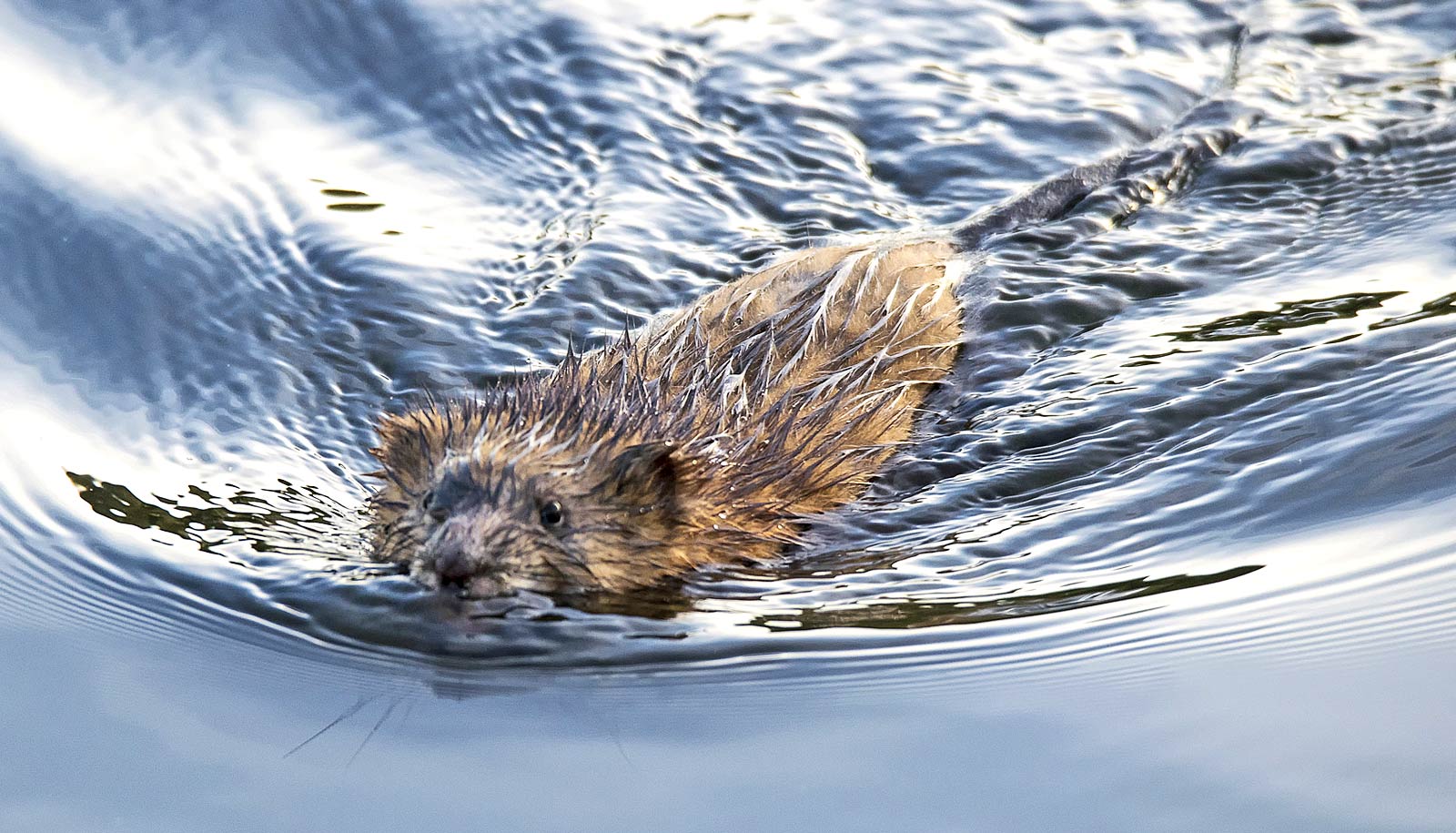Although Indigenous communities have used muskrat fur to make clothing for generations and the animal’s meat is a seasonal delicacy, decades of trapping are not primarily responsible for the animal’s decline across North America.
Instead, 46 years of satellite imagery show Canada’s Peace-Athabasca Delta has been drying out since the 1970s, significantly reducing muskrat habitat.
“The ecological impacts are not limited to muskrat—they extend far beyond that,” says lead author Ellen Ward, a doctoral candidate in Stanford University’s School of Earth, Energy & Environmental Sciences. “These results suggest that maybe the widespread continental‑scale decline in this animal is actually being driven by a large‑scale loss in wetland and aquatic habitat.”
Located in northeast Alberta, the Peace-Athabasca Delta is a Ramsar Wetland of International Importance and North America’s largest inland freshwater delta. The area comprises habitat for about 200 bird species as well as the threatened wood bison, which is among the largest land animals on the continent. The semi-aquatic muskrat is native to North America and an important ecological indicator since the species is highly sensitive to changing hydrologic conditions.
As reported in Environmental Research Letters, the researchers constructed maps of the 46-year record of surface water with Landsat satellite imagery from 1972 to 2017. Those images revealed that suitable muskrat habitat dwindled by 32 percent over a time when muskrat numbers also plummeted.
Muskrat serve as a convenient indicator for habitat loss because they construct easily counted “houses” for shelter. They rely on vegetation for food and to build their dwellings in lakes, small ponds, streams, rivers, and wetlands—and within the delta, they reside in the areas that are most susceptible to drying out.
“We basically constructed a map showing where every muskrat house count was measured, and they’re located in these smaller water bodies,” Ward says.
Although the idea that the delta has been drying is not new, nobody had directly mapped the loss and it had never before been clearly linked to the long-term decline in muskrat. Now resource managers can see where exactly the drying has occurred over time.
“Our result is timely because this UNESCO World Heritage Site is currently being considered for designation as a wetland with “in danger” status,” says coauthor Steven Gorelick, professor in the department of earth system science.
“If you look across the 46 years, you can see how much of the time each minute area was under water in those 46 years,” Ward says.
Previous research has suggested that the drying delta is primarily a result of climate change. If it continues, the decline of muskrat in the region will have impacts throughout the food chain, as muskrat are prey to many animals, including lynx, fox, and mink. Their existence is critical to Indigenous people in the area, since muskrat are a part of treaty rights to hunt, fish, and trap.
Source: Stanford University

